Contents
- Amar Nagar Market, Mulund West
- Chindi Market, Kurla
- D-Mart
- East Indian Bazaar, St Andrews Bazaar, Bandra
- Elco Arcade, Hill Road, Bandra
- Giran (Grand) Bazaar, Sewri
- Guruwar Bazaar, Mulund Colony
- Khar Danda Fish Market, Khar Koliwada
- Linking Road Market, Bandra
- Municipal Market, Vile Parle
- Mulund Station Market, Mulund West
- Sabzi and Livestock Market, Balrajeshwar Road, Mulund
- Timber & Bamboo Market, Bhandup, Mulund-Goregaon Link Road
- Sources
MUMBAI SUBURBAN
Markets
Last updated on 6 November 2025. Help us improve the information on this page by clicking on suggest edits or writing to us.
Amar Nagar Market, Mulund West
The Amar Nagar Market, beloved by the local community, is famous for its diverse selection of fresh fruits and vegetables. Over fifty years old, this bustling market is a popular destination where residents come to purchase their daily produce. Occasionally, seasonal vegetables like kavla (leafy vegetable) and kaddu can be found in the market, sourced from the forest nearby by the adivasis.
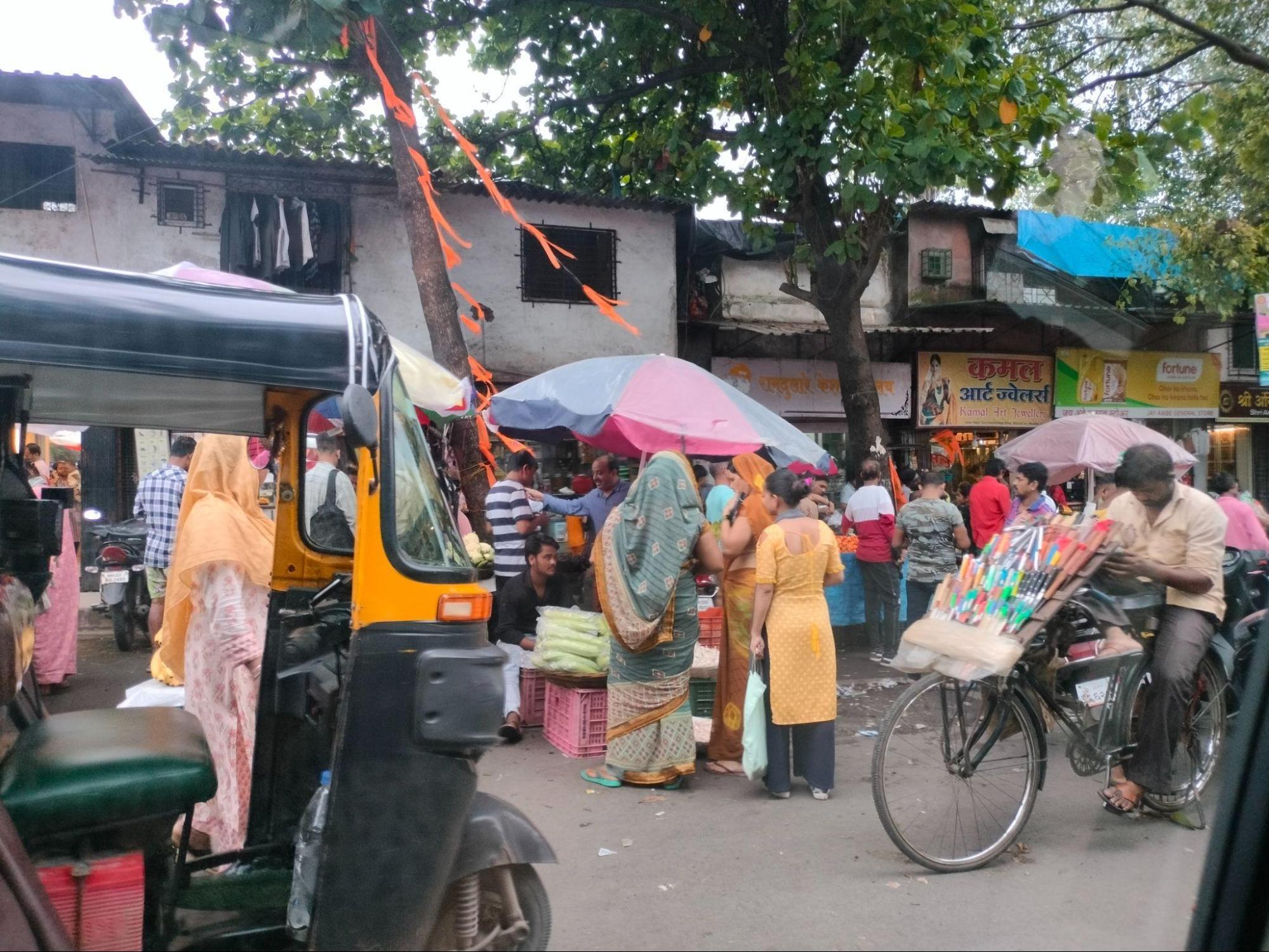
Chindi Market, Kurla
Kurla is home to the Fabric Bazaar, also known as ‘Chindi Market’ where shoppers can browse through an array of fabrics and textiles. Chindi Bazaar is a street shopping haven for textile lovers, offering a dazzling array of fabrics, textiles, and sewing materials at affordable prices. In this market, additionally, you can also buy beauty products and homeware.
The market starts from either 12 or 2 pm and ends at 9pm. While the market is there everyday, the footfall of vendors and shoppers remains the most on Thursdays.
Additionally, the fabric market in Kurla extends to the Baghdad Cloth Market (Chindhi Gali) that lies in Kismat Nagar, Kurla West. This market, operating in the space of Naseebullah Compound, remains open every day.
D-Mart
D-Mart, a renowned retail chain in India, is synonymous with providing high-quality products at affordable prices. Whether it be a mall or a supermarket, the store is often crowded by the middle class demographic in cities who are drawn in with its bazaar-like discount strategies.
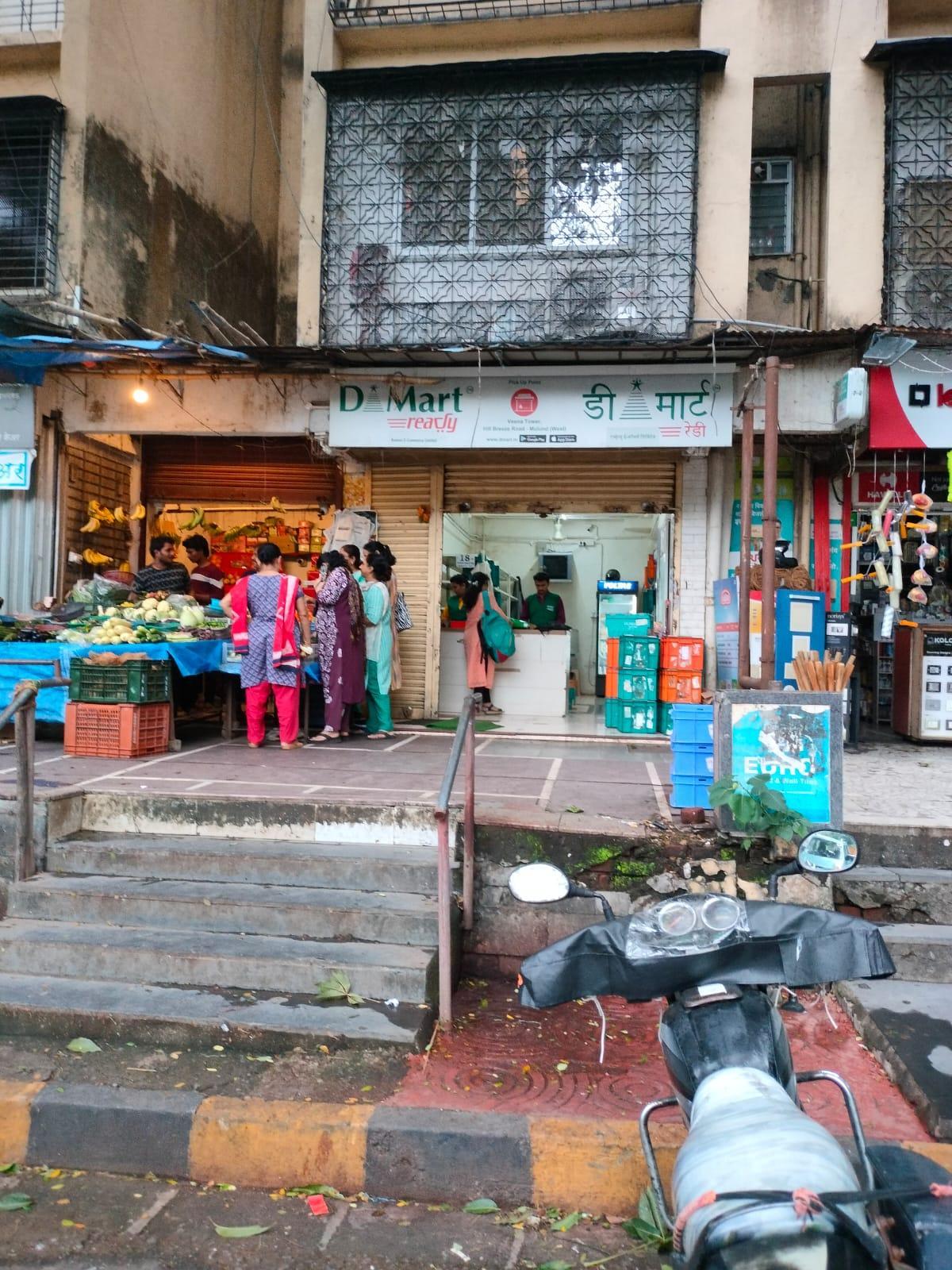
Still, while everyone in the city might know about the brand, only a few may know that this supermarket originated in the suburbs of Mumbai. Founded by Mr. Radha Kishan Damani, a distinguished Indian billionaire businessman and investor, DMart inaugurated its first store in Powai, Mumbai in 2002. Since then, the company has expanded its footprint to encompass more than 345 stores nationwide.
DMart operates as a comprehensive supermarket chain, offering a diverse selection of essential home and personal products under one roof. This includes food items, toiletries, beauty products, clothing, kitchenware, bedding, home appliances, and more, all competitively priced much like local bazaar markets.
East Indian Bazaar, St Andrews Bazaar, Bandra
St. Andrew's College, in collaboration with Mobai Gaothan Panchayat, hosts a bazaar, organized with the intention of uplifting the community. Mobai Gaothan Panchayat, an organization that conserves East Indian culture and voices their concerns, encourages the impoverished and creative/innovative members of their community to cook and sell East Indian food or showcase their arts and crafts through this bazaar. Featuring at least 30 stalls, the bazaar takes place only once a month on a Saturday. The event sees a crowd of at least 300 people regularly.
![East Indian Bazaar[1]](/media/culture/images/maharashtra/mumbai-suburban/markets/east-indian-bazaar1-d31f02e2.png)
Elco Arcade, Hill Road, Bandra
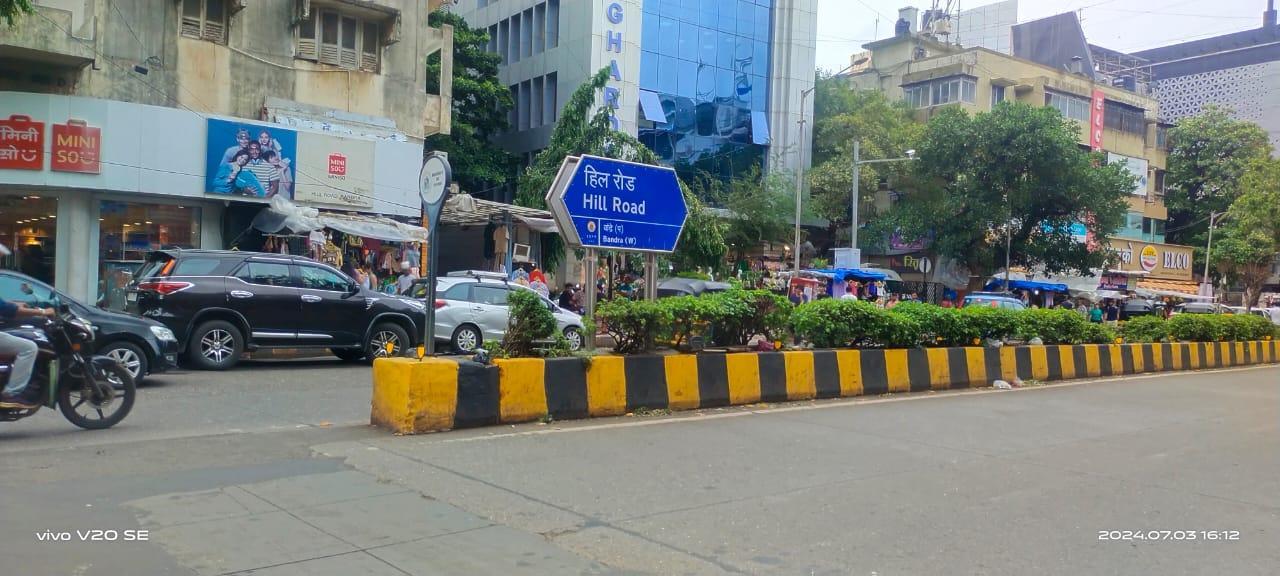
Interspersed between the landscape that houses both Elco Market and Hill Road Market, the Elco Arcade Shopping Center is a bustling hub renowned for its diverse range of textiles, apparels, and wholesale trade offerings. In some ways, the shopping center is first of its kind. Upon its construction in the late 1970 or the early 80s, the arcade became Mumbai's first air-conditioned shopping center. The arcade is open Monday to Saturday from 10/11 AM to 9 PM. Still, not all shops remain closed on Sunday.
While the market is mostly known as a fashion center, one of the most intriguing stories within the space is that of the ELCO Pani Puri Center. What started as a small cart by a second-generation partition refugee in 1968 has now become a famous landmark in Bandra. What sets the cart apart from others is Mr. Bhagnani, the owner’s use of mineral water. The immense popularity of his Pani Puri, eventually leading to the expansion of his business from one cart to two carts, and then to a shop in the same area.
In an interview with InsideIIM titled The Real Life MBA - ELCO Paani Puri Centre - The Man Who Sold His Paani Puri, Mr. Bhagnani's son, Anil Bhagnani, mentions that the popularity of the cart was such that the name was chosen by the customers themselves. This popularity resulted in the business being registered under the name ‘ELCO Pani Puri Center', surpassing even the market itself in terms of recognition. Today, with a minimum footfall of 1K customers each day, the ELCO Pani Puri Center has become an integral part of the Elco Market.
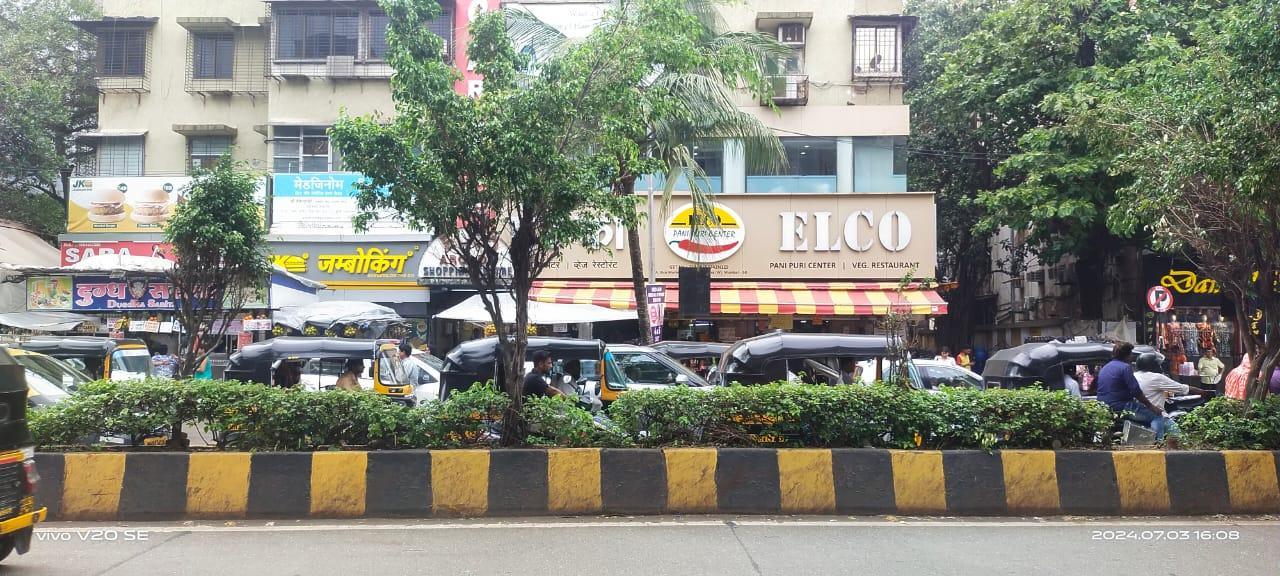
Giran (Grand) Bazaar, Sewri
The Bazaar, located along Forsberry Road, is a market established by the workers themselves and does not have a significant historical background. It is recognized for its trust, coordination, and management, which are relatively uncommon in Mumbai. Originally, the site was utilized by the British to store goods transported by railways and boats. Today, it primarily serves as a storage facility for various cement companies.
These companies use the Bazaar to store cement bags, which are later transported by private trucks and tempos. Workers efficiently load the cement bags into vehicles within ten to fifteen minutes. The market remains operational even during rainy weather, with trucks parked strategically to prevent water from entering the back.
The Bazaar experiences heavy traffic, with hundreds of trucks passing through every hour, all managed to ensure timely deliveries. In addition to the cement storage, there is a Pav Bhaji and tea stall available for the workers.
Guruwar Bazaar, Mulund Colony
Located in an area that housed barracks created for partition refugees, this local market caters to the needs of its local public boasting a legacy that predates even the majority of third-generation partition refugees. This market, called the Guruwar Bazaar in Mulund Colony is a bustling market where one can find a diverse range of products at affordable prices.
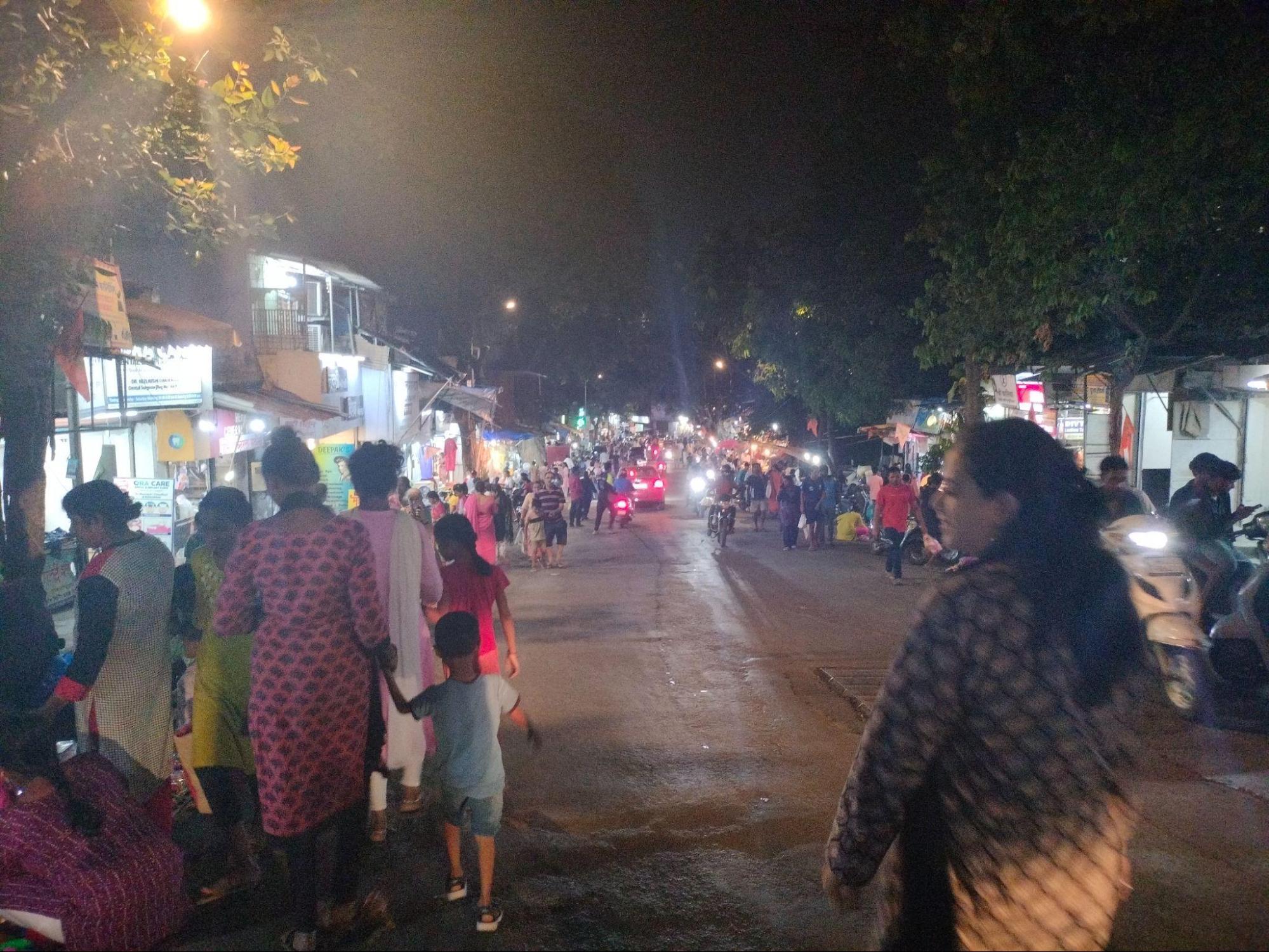
Operating only on Thursdays, this market is a treasure trove for bargain hunters, offering everything from household items to fresh vegetables. Infamously known as the “Cheap bazaar” among the local public, the market has a wide assortment of goods available at pocket-friendly prices. While the market started as a sabzi bazaar, it grew steadily with vendors offering a plethora of items to cater to the needs of shoppers. These items range from utensils, vegetables, fruits, jewelries, and more—all clubbed into the space of the small, straight lane.
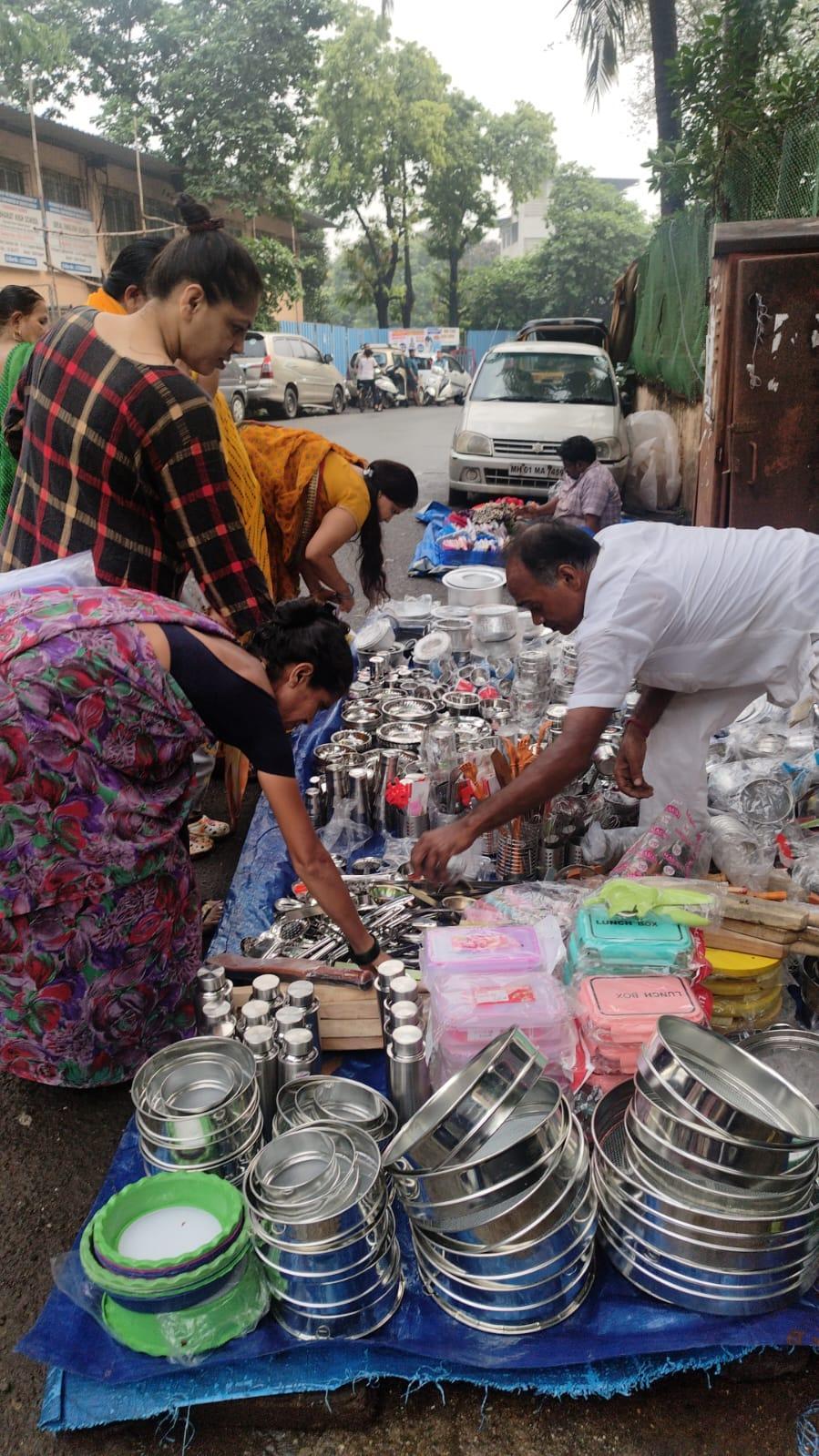
The Mulund Colony Thursday Market holds significance beyond being a place of commerce. The market is closely associated with the worship of Sai Baba, with Thursdays being particularly auspicious as it is considered Sai Baba's day. The association with Sai Baba's day, Thursday, draws a large crowd to the market, with many visitors making a pilgrimage to the nearby Sai Baba Mandir before or after shopping. The etymology of the market's name likely stems from its location in Mulund Colony and its association with Thursday, the day dedicated to Sai Baba. The Guruwar market timings are from 5 pm to 10 pm.
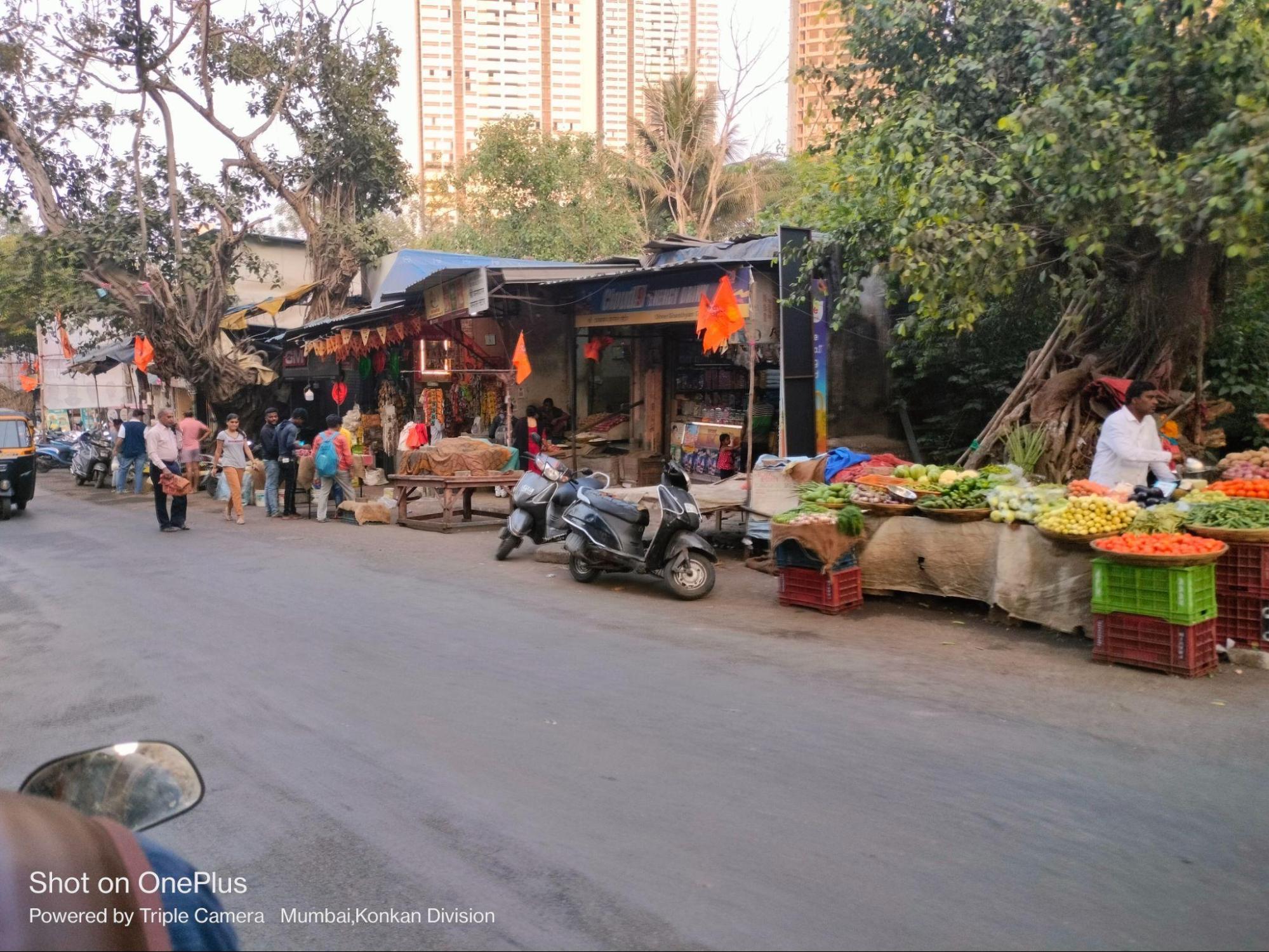
Khar Danda Fish Market, Khar Koliwada
The Kolis have long followed this single tradition of work bifurcation in households; the men go out to fish, and the women sell fish. Situated in Khar, the Danda Fish Market stands as one of Mumbai's most extensive wholesale fish and seafood markets. What sets this market apart is that it is managed by a group of more than 100 women, mostly Kolis, who have dedicated generations to the seafood business. Mumbai Suburban is known to be a leading producer of marine produce.
Linking Road Market, Bandra
If one word could encapsulate Mumbai's Linking Road market, it would be “paradoxical." This bustling market boasts some of the most exclusive luxury brands on one side, while also serving as a haven for bargain-hunters and fashion enthusiasts seeking affordable trendy apparel and accessories. Despite being ranked as the fourth most expensive market in India and 33rd globally in 2023, with a rent of around 116 Million USD, Linking Road remains a popular destination for both street shopping and designer store browsing.
The market's origins date back to the 1940s, when it served as a vital link between the suburbs of Bandra and Juhu. Back then between the 50s and 60s, the retail stores of Linking Road were visited by top Bollywood stars. In addition to catering to the public, Linking Road also functions as a wholesale market, supplying fashion retail stores alongside other markets like Crawford and Byculla.
COVID pandemic pretty much damaged a lot of small-scale businesses. Losses faced by shopkeepers, especially of non-perishable goods, were ubiquitous. In Linking Road, the market opened back in June 2020. According to the BMC circular, shops were required to adhere to an odd-even rule: one day, shops on one side would open, and the next day, they would be closed while shops on the opposite side opened.
When it comes to street shopping, there will always be issues surrounding the legality of hawking. For this, there are organizations who advocate for their rights and enforce regulations within the market. This organized approach gives them more power and structures their operations effectively. In 2017, as the Mid-day article Linking Road reopens, but stall owners remain wary. Here's why, written by Hemant Ashar documents, “For the last 17 days, the street that offers affordable retail therapy had been devoid of footfalls. Owners of nearly 167 stalls are locked in a battle with the BMC over a proposal to shift them from their current location on the pavement and place them a few feet ahead on the road.” The Stall Owners Welfare Association played a preliminary role during this period, in voicing the issues and concerns of street stall owners.
With regards to the timings, the street market operates from 9am onwards, with vendors setting up their stalls. By midday, the market is bustling with students on lunch breaks and transient vendors selling various goods. The evening sees even more crowds, with vendors closing up shop around 9pm as the market slowly winds down for the night by 10:30/11 pm.
Municipal Market, Vile Parle
The municipal market in Vile Parle East, located opposite the railway station, is renowned as the prime destination for shopping. Established for over 15 years, the market boasts a vast space accommodating numerous small retailers who provide diverse products of excellent quality at competitive prices.
It serves as a comprehensive shopping solution for Puja samagri, clothing, fish, artificial jewelry, flowers, cosmetics, innerwear, and tailoring services. Additionally, it features dedicated sections for fish, chicken, and mutton vendors. Despite its many conveniences, the main drawback is the lack of parking facilities.
Mulund Station Market, Mulund West
In that sense, Mulund Station market is a notable market in the area, offering a convenient shopping destination for commuters and residents alike. The Mulund Station market is particularly known for its vegetable and fruit stalls, clothes, and accessories. The stalls at the market near Mulund station exhibit an array of vegetables and fruits, sourced from various regions within the state and country. Throughout the day, the market transforms into a hub of bargains and attractions. Clothes of all kinds hang on racks, tempting shoppers with their prices and styles. Traditional, western, and festive wear are all available within the hub. These collections are mostly sourced from regional markets such as Linking Road, Crawford street, Byculla Market, and more.
The market grew as a result of the budding population and residential projects in the otherwise isolated Mulund West area. The station was built around 1918-1920. It is estimated that the market grew as residential spaces started growing in the area. By the time, the second-generation partition refugees in the area grew, the market had grown and bloomed into the space we know it as today. The market is an amalgamation of both street hawkers and shopkeepers. In Mulund station market, many shops are closed on Thursday, although vegetable stalls are always present there. The Station market differs in the very essence of how business models are classically categorized as retail or wholesale. Its landscape is a mixing pot of retail stores and wholesale merchants when it comes to specific stores that sell farsan, footwear, and utensils/stationery.
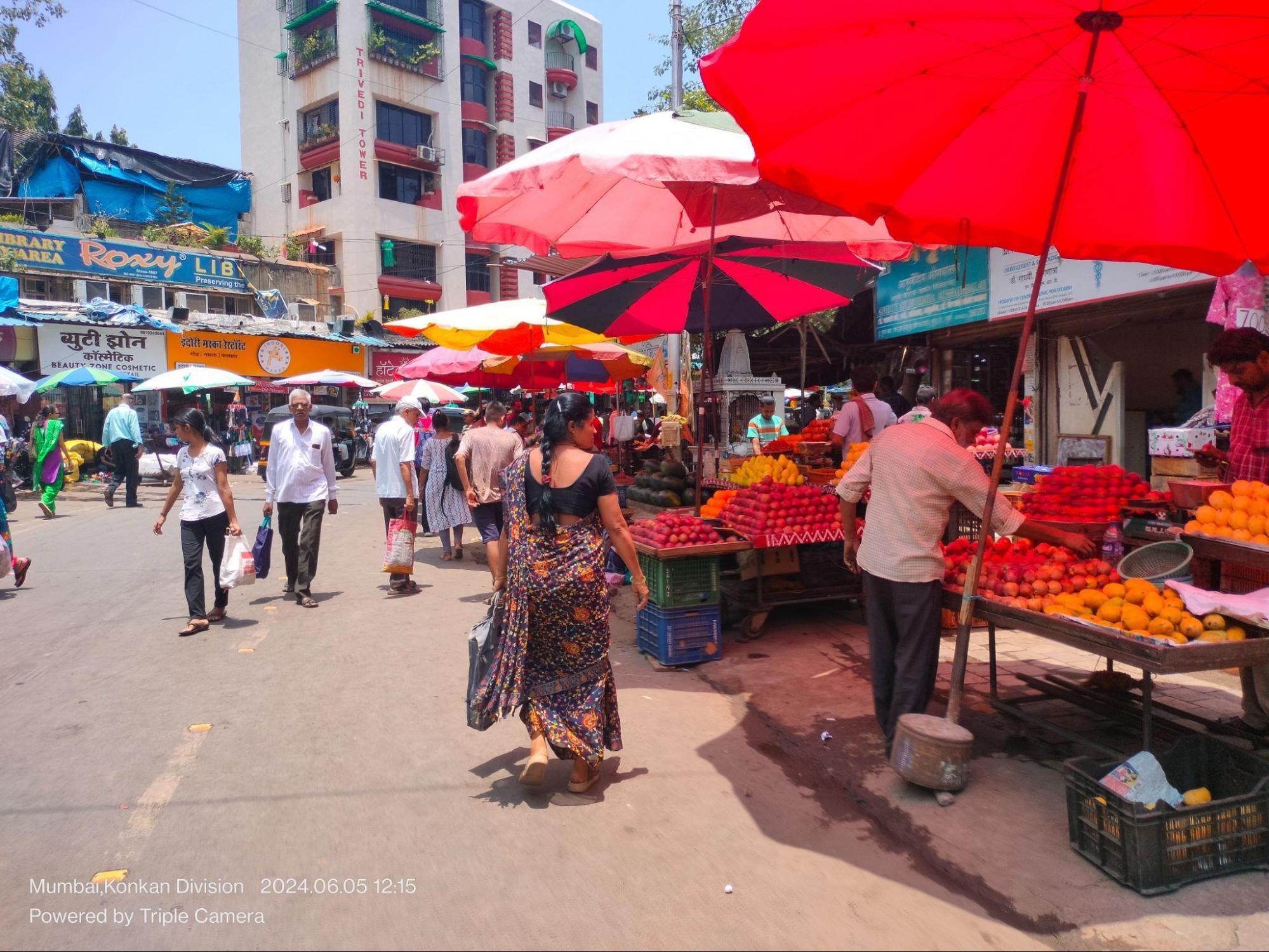
The street hawkers do not function as part of the wholesale markets with regards to the trade and supply, however they do not quite function as retail too in the very essence of the economic metrics of a retail store, with their fixed prices and presentation of goods and services. The bazaars aren’t even flea markets, although some clothes street stalls do sell “defective” branded clothes as they call it. They have a special essence of their own, with the unusual cacophony, clustered and crowded streets, affordable prices, wide variety of products and assortments, the bazaar is something unique to Mumbai.
The market also houses an old book depot, named Jagdish Book Depot. The book depot has its stores across stations such as Thane, Ulhasnagar, and more. The store caters to students, being a hub for many college-goers to buy second-hand and rent academic books and textbooks at discounted rates. Hence, for college students the store offers great options in terms of affordability and sustainability.
Additionally, the market houses a considerable amount of bridal wear retailers, boutiques, and gold jewelry stores, making it a local shopping destination for brides and grooms alike.
As time passes, informal spaces in urban areas take on different forms, expanding their borders to encompass various aspects of modern city life. Markets of Mumbai are usually informal, open spaces. These informal spaces serve as hubs for livelihood, socializing, and recreation. These in-between spaces provide affordable opportunities for people to eat, gather, and interact, with markets popping up in the morning and evening along footpaths and junctions. While most stalls adhere to set hours i.e. 9.00 am – 10.00 pm, some may stay open or close beyond the set timings.
Mulund Station market's layout is intriguing, with its large size and various clusters. The interconnected lanes form a rectangular pattern, each housing shops and temporary market setups such as street stalls. This structure stems from Mulund's history as one of earliest planned suburbs in the area. In 1922, German architects and planners conceived a gridiron plan, which extended Mulund from station to paanch rasta.

With respect to street stalls, some stalls, such as food stalls can only be found starting from a certain lane. The lanes that are adjacent to the station house mostly vegetable and fruit stalls. Additionally, there are also mobile accessory shops that are close by. It is in the lanes, as they are tagged MG road, RRT roads, and more where items more than groceries can be found.
While there is diversity, the vendors who truly animate Mulund station market represent a multitude of regions such as Gujarati, Jain, Marwadi, Maharashtrian, UP, Bihari and more. Still in clusters we can see the population of one being more than the other. The majority of shopkeepers at Mahajan Wadi, where a large Kutchi population resides, are Kutchi or Gujarati.
While, the new architectural structures in the area segregate commercial and residence spaces. It is important to note that in many of the old housing structures in the area, commercial and residential structures are interspersed.

Despite the rise of online shopping and large shopping centers, street vending continues to thrive in cities like Mumbai. These practices reflect the diverse and multifaceted nature of urban environments, rejecting the idea of a singular, iconic image and embracing the complexities of modern city living.
Sabzi and Livestock Market, Balrajeshwar Road, Mulund
The sabji and livestock market at the intersection of Balrajeshwar Road experienced growth in recent years due to the boom in nearby residential projects. This market, estimated to be at least 30-35 years old, has become a popular destination for locals seeking fresh vegetables and fruits, resembling a bustling local grocery bazaar.
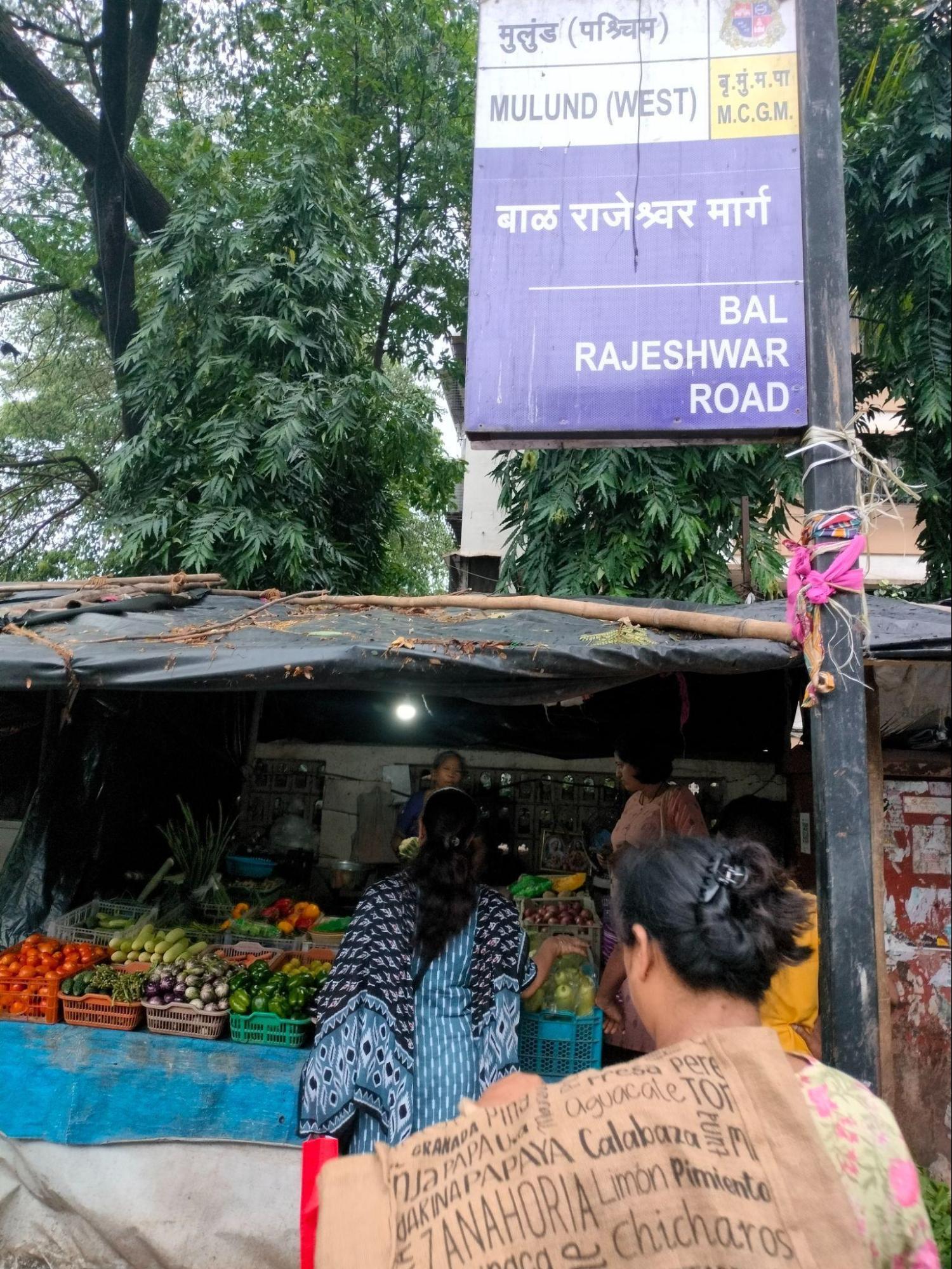
The vegetables in the market are sourced from Nashik. During quarantine, the sabji sellers of the intersection supplied grocery to nearby grocery and general retail stores in the area.
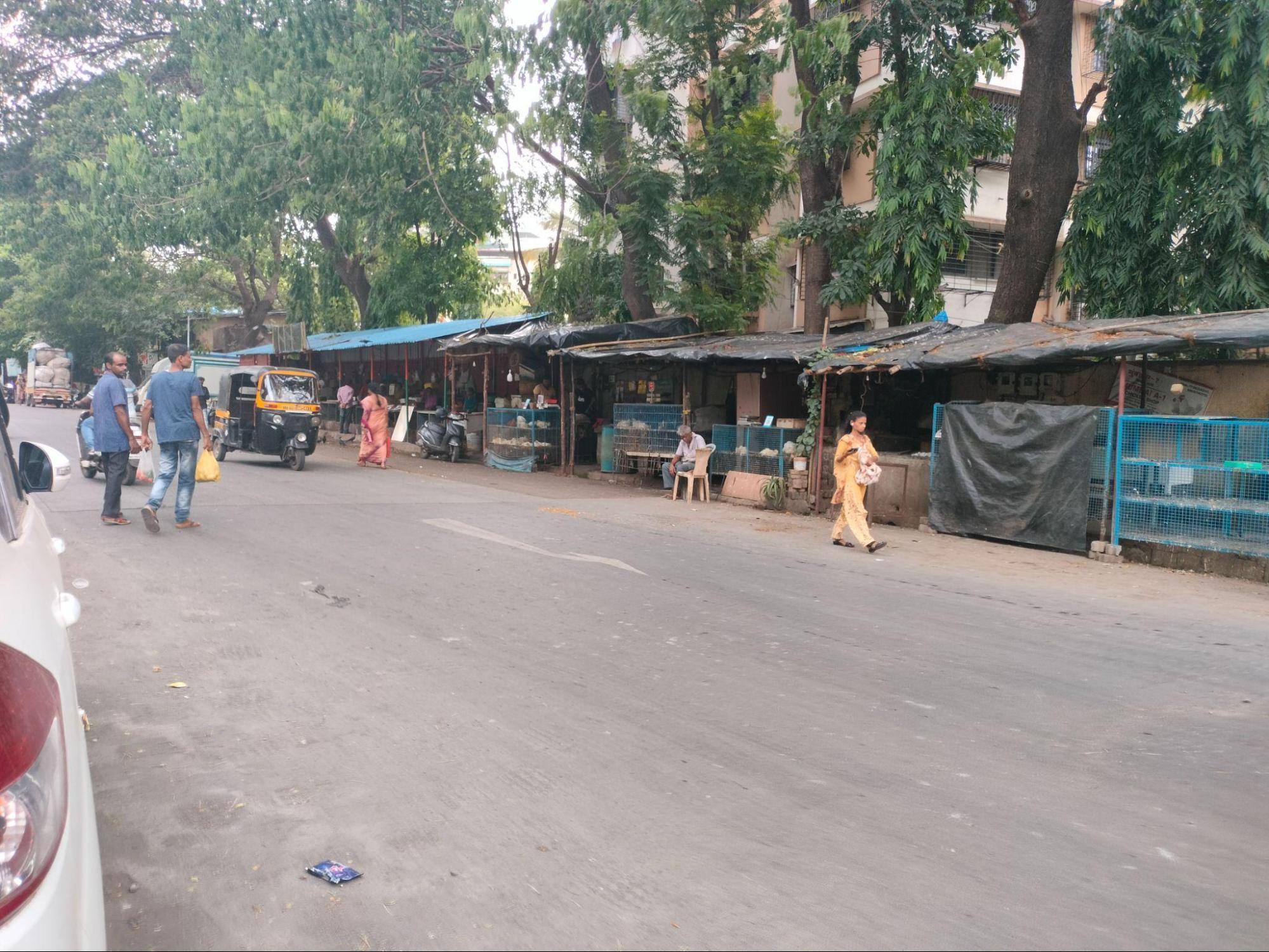
Timber & Bamboo Market, Bhandup, Mulund-Goregaon Link Road
In the midst of the lane that links Mulund, Bhandup, Airoli, and Goregaon highway together, this market cluster is a destination for those in search of timber, laminates, and bamboo products. The opening and closing timings followed by most stores in this market cluster is 9 am to 9pm. The market is referred to as “lakdi ka vakhar” by some, these products are sold at wholesale rates here.
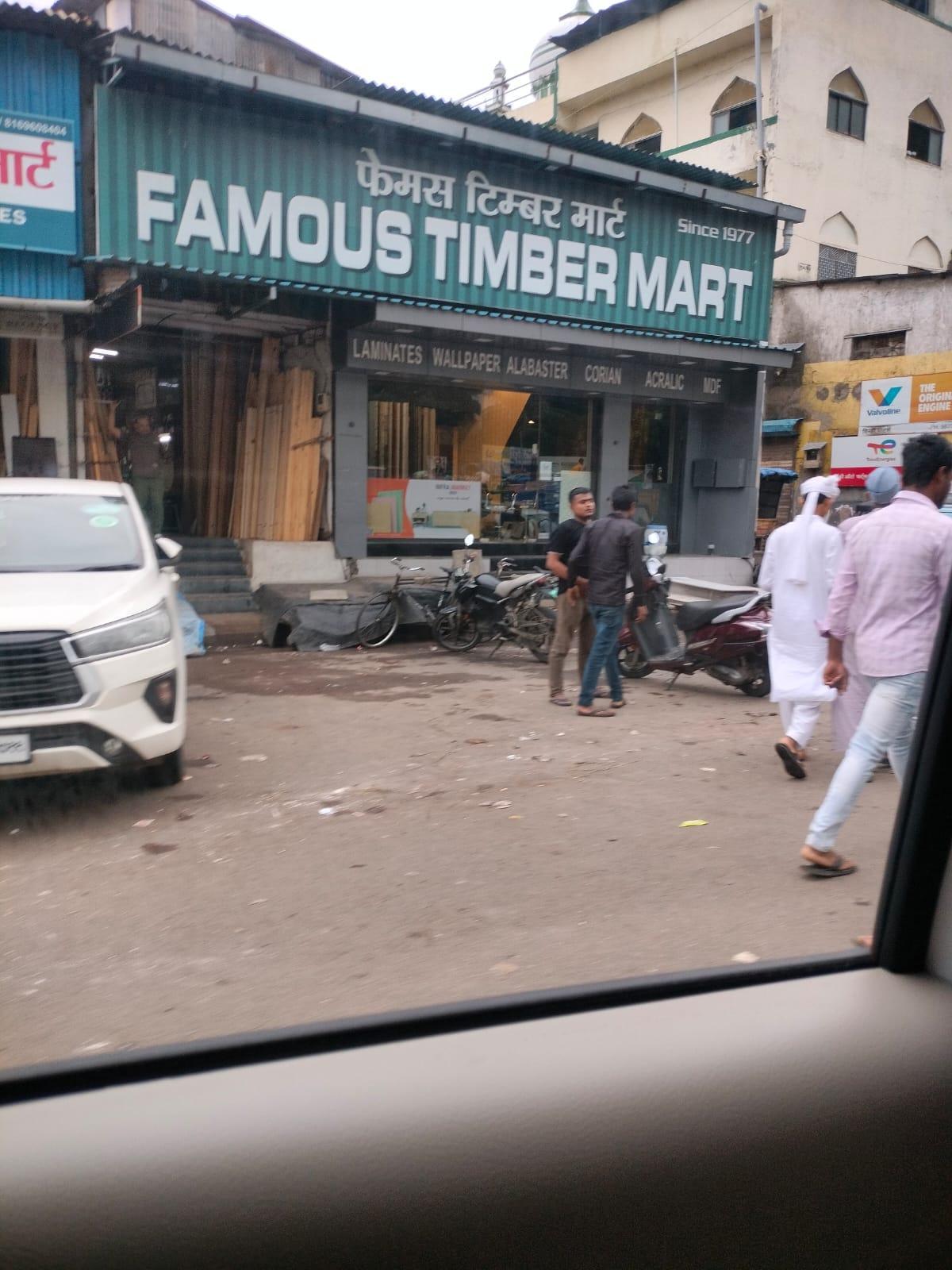
Sources
InsideIIM. 2016. The Real Life MBA – ELCO Paani Puri Centre: The Merchant from Sindh. InsideIIM.https://insideiim.com/the-real-life-mba-elco…
Justdial. n.d. Linking Road Market, Khar West. Justdial.https://www.justdial.com/Mumbai/Linking-Road…
Mid-Day. 2017. Mumbai: Linking Road Reopens, but Stall Owners Remain Wary. Mid-Day.https://www.mid-day.com/mumbai/mumbai-news/a…
Mumbai Meri Jaan. 2017. Grand Bazaar, Sewri. Mumbai Meri Jaan.https://mumbaimerijaaaan.wordpress.com/2017/…
Times Now News. 2023. Mumbai's Linking Road, Kemps Corner Among Most Expensive Markets in India for 2023. Times Now News.https://www.timesnownews.com/mumbai/mumbais-…
Last updated on 6 November 2025. Help us improve the information on this page by clicking on suggest edits or writing to us.